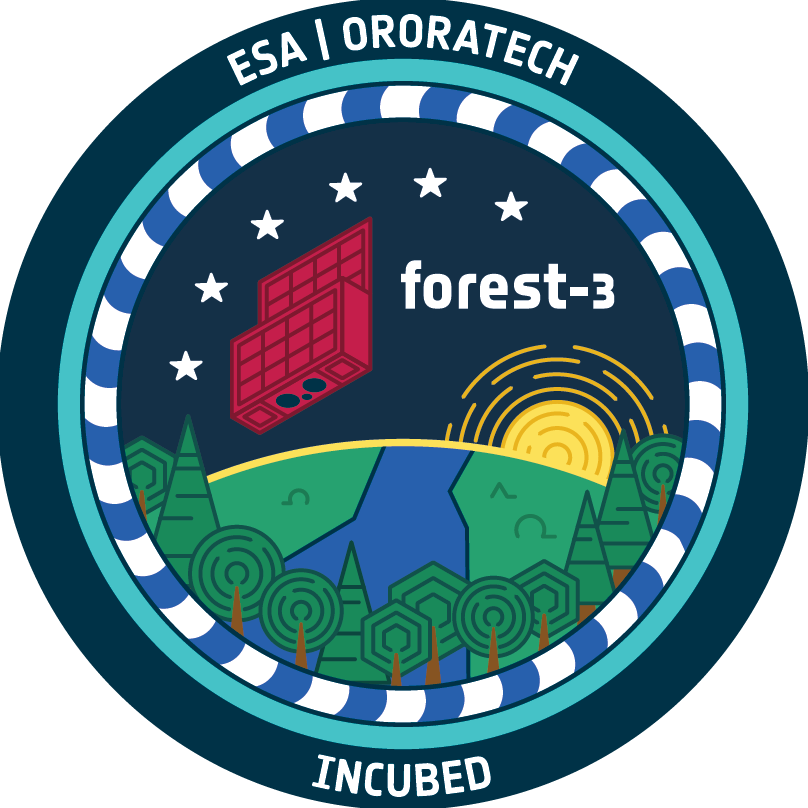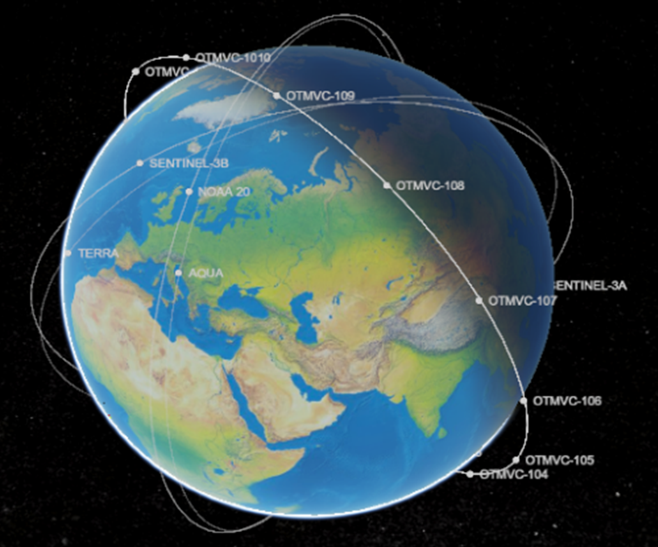
 Platform
Platform  Payload
Payload  Ground Networks & Data Distributions
Ground Networks & Data Distributions  Ground Stations & Mission Management
Ground Stations & Mission Management  Data Processing & Visualisation
Data Processing & Visualisation  Data Analytics, Insights & Applications
Data Analytics, Insights & Applications Late detection of remote wildfires heavily contributes to global warming, as they emit tons of CO2 into the atmosphere. Most of the damage caused by fires is due to extreme wildfire events, which account for about 2% of the total fires. Prevention, quick detection, and real-time monitoring of wildfires are therefore essential.
Existing non-space solutions for wildfire detection (watchtowers, camera systems, drones, helicopters, and wireless sensors) are often inadequate and financially unviable, especially for monitoring larger forest areas. Space-based solutions could theoretically close this gap, but available solutions on the market suffer from a lack of accessibility, usability, and data sources.
We identified a clear need on the market for an all-in-one global wildfire detection, alert, and monitoring service based on all available data sources (space and non-space). This led us to develop our Wildfire Solution (WFS) platform, a progressive web app that is already on the market and incorporates more satellite data sources than any other system. This solution offers multiple overlays (e.g., weather, terrain, wind) based on customers’ input and enables early detection of both extreme and minor wildfire events worldwide.
However, existing satellite data sources are only partly sufficient, primarily due to data gaps in the afternoon, when many fires ignite. This leads to the need for more thermal-infrared satellite data, especially at local afternoon times. The ongoing miniaturisation of satellites and their payloads offers the right solution to address this problem. Therefore, we are closing the current thermal-infrared satellite data gaps by placing our miniaturised thermal-infrared imager in low-earth orbit to complement the existing satellite data sources. This activity brings us closer to our mid-term goal of launching our so-called minimum viable constellation of about 14 nanosatellites, placed in a sun-synchronous orbit at local afternoon time to close a gap of around 6 hours, where currently no space-based wildfire data exists. This gap is critical for our customers, as the occurrence of wildfires peaks exactly at that time. This orbital thermal sensor network can then be complementary to existing larger missions.
Wildfires’ environmental, economic, and societal problems show a clear need for an all-in-one downstream service for wildfire management based on all available data (space and non-space). New satellite data is needed to address the problem of insufficient revisit times and resolution. We believe that our end-to-end solution strongly addresses this problem and can be the solution globally.

The key customer segments targeted by our product are in the B2G (public) and B2B (private) sectors. Governments, fire services, commercial forestry companies, insurance companies, and environmental organisations are among the most important users of our Wildfire Solution.
In B2G (business to government), the problems and needs of wildfire services are already well understood by OroraTech, as we already have paying customers within this segment. Besides having more accurate short-term fire risk assessments, early fire detection and a real-time overview of fire spread are two needs identified in this group.
In B2B (business to business), commercial forestry has been the early adopter of our system. Faced with similar challenges as the public sector, commercial wood and pulp producers usually have a denser network of fire detection technologies and staff in place. The costs of each hectare lost to fires can directly be translated into willingness to pay for enhanced prevention measures and faster early detection.
One of the most promising sectors is the insurance industry (direct insurers, insurance brokers, re-insurers) with a specific demand for high-quality data, reliability, and proven track records. Active fire monitoring is regarded as less of an issue compared to sophisticated fire risk analyses and improvements for more efficient damage evaluations.
Wildfires are a global problem. Therefore, we want to provide our Global Wildfire Detection Network to any potential customer in any country around the world.
Our goal is for the Wildfire Solution to offer the lowest latency for wildfire detection and monitoring on the market and create a network of our own proprietary nanosatellites. This can be translated into a significant improvement in our offer to customers: we can prove the quality of our data and demonstrate the viability of using nanosatellites for low-cost supplementation of thermal-infrared data from space.
Our current Wildfire Solution aggregates most satellite data sources on a global scale, standing out in comparison to existing publicly available downstream service solutions. As a result, detection times are lower, and monitoring capabilities are higher.
Direct fast alerts and updates are automatically sent to users for their area of interest, enabling them to deploy fire suppression resources optimally. Innovative features like the hotspot-fusion of all gathered data, fire spread predictions,and the easy-to-use overlays of wind, weather, and other data differentiate us from what is available on the market. Unlike other solutions, we also incorporate non-space data sources from our customers, like automated cameras and other sensors. All our development is thereby closely coupled to the feedback of our customers and thus answers the demand on the market (co-creation concept).
Concerning solutions on the market that build upon non-space data sources, we can offer higher scalability and more cost-efficient coverage of larger areas. Each of the existing solutions can only cover a very small part of Earth’s land and thus is inadequate and financially unviable when it comes to larger areas, like countries, or even the whole planet.
Furthermore, there are also several areas of innovation for our multispectral thermal infrared imager: it is miniaturised for the volumetric constraints of a CubeSat. It can sense mid-wave as well as long-wave infrared radiation, which makes it the ideal choice for detecting high-temperature events like wildfires. As data delay is significant for our customers, we have developed a GPU-based processing module for on-orbit wildfire detection (classical and AI algorithms possible). Another key-innovation of our R&D complements this: an inter-satellite modem, which allows the near-real-time downlink of key parameters of the detection, cutting down the delay of wildfire alert dissemination from several hours to minutes.
As of today, Wildfire Solution aggregates most satellite data sources on a global scale, standing out in comparison to existing publicly available downstream service solutions.
Data from our two proprietary orbital sensors and 23 existing satellites are processed, merged, evaluated, and made available on a user-friendly interface. This significantly accelerates, digitises, and simplifies the process of wildfire detection and monitoring.
The launch of our proprietary sensors with FOREST-1 in 2022 and FOREST-2 in 2023 was a monumental step in the growth of our CubeSat design and execution, with the cameras being validated through orbital testing and data accumulation. Our next-generation sensor, FOREST-3, is now, after extensive testing, ready for launch. This imager will feature our advanced multispectral thermal infrared camera and upgraded technical hardware for long-term orbital thermal imaging. Recently, FOREST-3 closed its Qualification Acceptance Review with ESA. With the closure of the QAR, the assembled flight system was delivered for integration into the deployer at the end of August. This platform will be used as an in-orbit demonstration for our upcoming constellation.
The launch of FOREST-3 is scheduled for November 2024.

